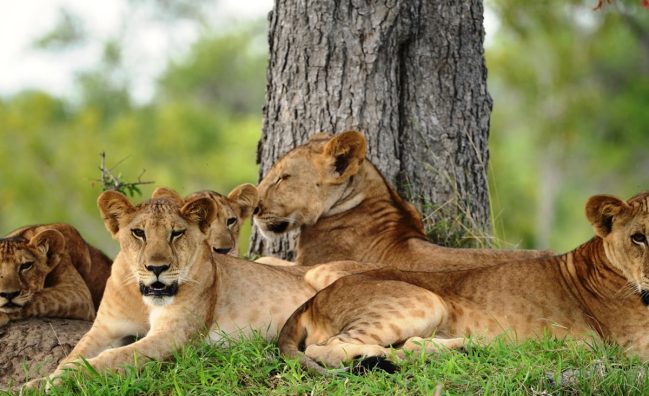
Lake Manyara National Park is a compact yet diverse park located at the base of the Great Rift Valley escarpment. Renowned for its dramatic scenery, tree-climbing lions, and birdlife-rich soda lake, the park offers a unique safari experience ideal for both first-time visitors and seasoned wildlife enthusiasts. Covering about 330 square kilometers—two-thirds of which is the lake itself—Lake Manyara is an excellent stopover en route to Ngorongoro Crater and Serengeti.
Despite its smaller size, Lake Manyara is bursting with biodiversity and landscape variety. The park transitions rapidly from groundwater forest to acacia woodland, swamps, and hot springs. This range of habitats supports a remarkable variety of wildlife including:
Tree-climbing lions – a rare behavior observed in just a few places in Africa.
Large elephant herds roaming through forested areas.
Over 400 bird species, especially flocks of flamingos, pelicans, storks, and cormorants at the lake’s edge.
Troops of baboons, often numbering in the hundreds—the largest in any park in Africa.
Manyara also features underground water forests and the alkaline Lake Manyara, offering stunning reflections and ideal birdwatching conditions.
Lake Manyara National Park is located approximately 126 km (about 2.5 hours by road) from Arusha and is easily accessible by:
Road transfer from Arusha, Tarangire, or Ngorongoro
Charter flights to Lake Manyara Airstrip
Custom-designed itineraries with Egreat Safari Tanzania
Its location makes it perfect for combining with Tarangire, Ngorongoro, and Serengeti on the Northern Circuit.
Lake Manyara offers an ever-changing visual feast—from the dense fig and mahogany forests to the gleaming lake that reflects the escarpment and wildlife. The lake’s edge attracts flamingos, while forest roads provide rare chances to spot lions in trees. It’s a photographer’s paradise, especially at sunrise and sunset.
Dry Season (June to October) – Easier wildlife spotting as animals gather near water sources. Cooler mornings, warmer afternoons.
Green Season (November to May) – Lush vegetation, ideal for birdwatching and landscape photography. Expect some rains, especially from March to May.
For Wildlife Viewing: June to October
For Birdwatching & Scenery: November to May
1 Day: Perfect for a game drive and birdwatching experience.
2 Days: Allows time for photography, cultural visits, and walking or canoeing safaris (seasonal).
3 days
Daily Tour
100 people
English, Espanol, Francais